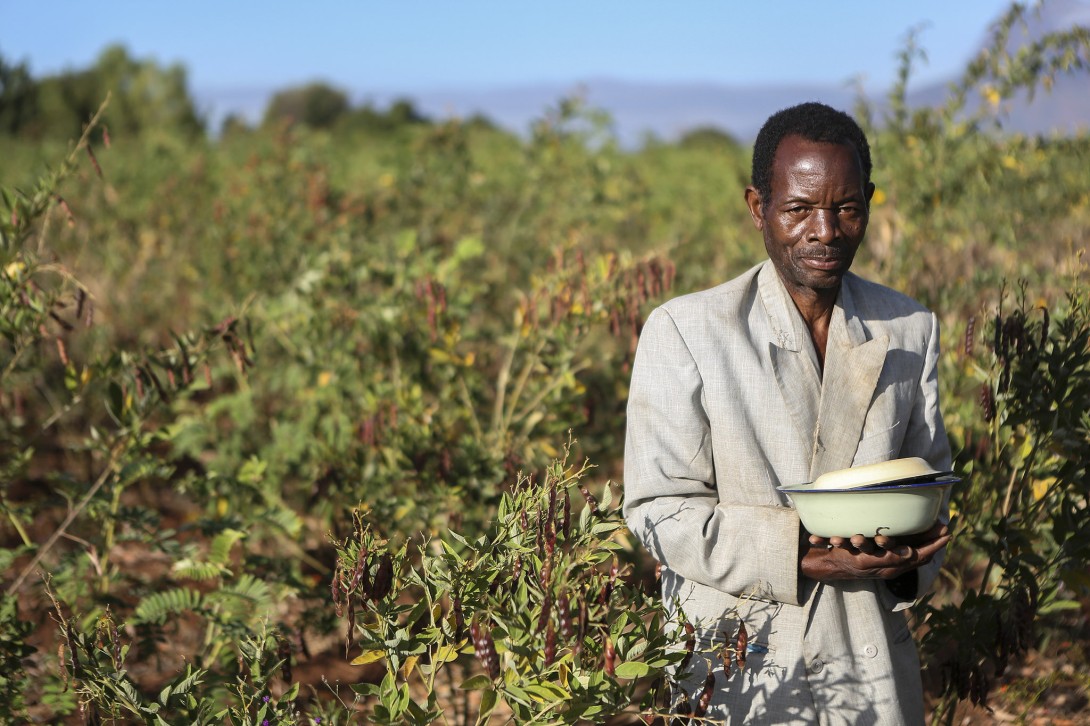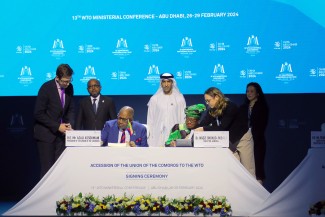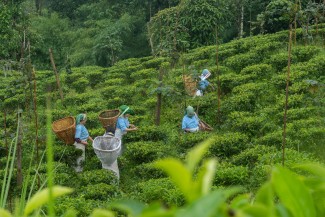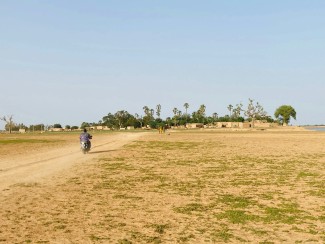Additional land to sow, targeted trainings, and market security mean higher incomes for smallholders
In Mchinji district, a rural area near the Zambian border in central Malawi, farmers normally work small plots of land of less than one hectare, growing maize, soybeans and groundnuts for food and to sell at local markets.
But if someone wanted to try and improve their yields or prevent pest attacks or ensure a buyer at harvest time, there was little recourse.
Now, following a recently completed pilot "anchor farm" project spearheaded by the National Smallholder Farmers' Association of Malawi (NASFAM), we know circumstances can be improved.
"Land is a very limited resource in Malawi. The anchor farm provides extra land for the farmer to be able to produce more. But more than that, farmers are also able to grow a crop that they wouldn’t be able to on their normal farm," said NASFAM Executive Director Betty Chinyamunyamu.
This translates into additional money for farmers, with average incomes more than doubling for those cultivating groundnuts, going from approximately MK 35,000 (US$48) in 2014 to 100,000 (US$138) in 2016. For soybeans, the increase was even more dramatic, going from MK 24,000 to MK 154,000 over the same time period.
And, the experience growing different crops could mean even more earnings into the future.

INFORMATION SOCIETY
Participating farmers were allotted a hectare of land owned by NASFAM and trained in the proper use of pesticides, the right times to plant and other skills that are difficult for them to access otherwise.
"The project has provided immediate and direct social benefits for people in one of the world's poorest places. We can see that incomes have increased, and there is clamour for more land to work in such a way, as well as more knowledge," said Simon Hess, Coordinator at the Enhanced Integrated Framework (EIF), which supported the efforts in Mchinji.
Farmers speak of additional assets to open businesses and pay for school fees, new homes and transportation. Newfound financial freedom means women and men can make plans and dream bigger.
Chinyamunyamu said, "most farmers are limited in the choice of crops they can produce because of various challenges. Once we have determined marketing potential for a crop, we work with the farmers to address impediments and help them to grow those crops."
The assessment of markets is fundamental to the project that began in 2014, with the goal not only to reduce poverty, but to improve crop quality and enhance Malawi's trade both at domestic and international levels.

MARKET MANEUVERS
Christina Zakeyo Chatima, Director for Trade at the Ministry of Industry, Trade and Tourism in Malawi, said, "the great thing with the project is that it looked at the whole value chain – the output from the farm as well as the markets for the country's exports.”
"The anchor farming is producing items in line with the priorities of the products in the country's National Export Strategy, including soybeans and peanuts and it connects with the government's goal to empower local Malawians."
That empowerment is taking the form of improved skills and increased information as well as a market orientation, with the assurance that there are buyers waiting to purchase farmers' crops – at a fair price.
Chinyamunyamu said, "when you talk to farmers in Malawi one of the major challenges they always complain about is the lack of markets – most farmers do not have secure markets or in some cases they do not even know if they'll be able to sell their produce and if so at what price. This challenge is being addressed in this project as the farmers are able to produce good volumes and with good quality."
She added, "we're helping the farmers to move from 'growing and selling' to 'growing to sell'."

FUTURES
Chatima said of the government's efforts, "what we are doing now is not only looking at exporting but looking at processing or value addition. We need to ensure our exports are not only raw products, and we're also looking at increasing access to regional and international markets."
"We are looking at replicating the same model in other parts of the country. This is due to the impact this project has had, improving people's livelihoods and the enhanced participation of women," she added.
Chinyamunyamu spoke of future possibilities like reviving exports of groundnuts to fair trade markets in Europe and creating more and stronger links to buyers. As the largest smallholder group in the country with a membership of around 130,000 smallholder farmers, the potential for even more impact is vast, considering the group's wide networks and range of ventures.
According to Hess, the micro and potential macro scales of the project are key to its impact. "The work could be done in other parts of the country along with more systemic support as well as adding value through processing. That kind of effort could also help to generate investment."
Such investment would go to a woman who was able to purchase livestock with the extra income made growing maize seed, or to a man who cultivates soybeans and has started selling cooking oil with his additional cash.
Chinyamunyamu said, "I think there's always this dichotomy between smallholder farmers and commercial farmers. But when the conditions are right, smallholder farmers are able to perform just as well as commercial farmers and their yields can go up to the same levels. So I think the one thing that was learned is that smallholder farming does not have to be synonymous with subsistence farming. We could have smallholder farming but with a commercial orientation where farmers are able to produce for the market and not just for food."
If you would like to reuse any material published here, please let us know by sending an email to EIF Communications: eifcommunications@wto.org.



